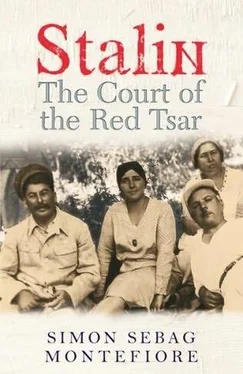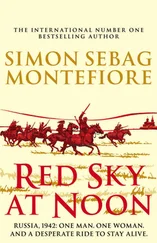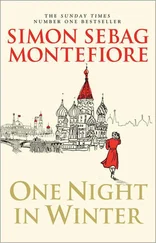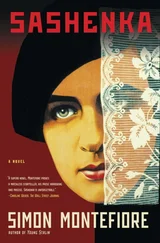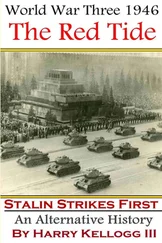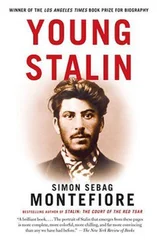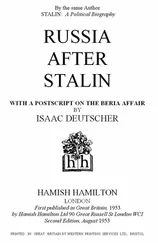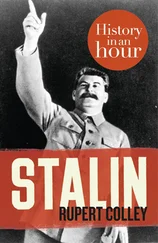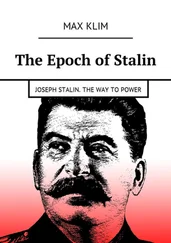Across the Kremlin, the magnates and their wives converged on Voroshilov’s apartment, oblivious of the tragedy about to befall Stalin and Nadya. None of them had far to come. Ever since Lenin had moved the capital to Moscow in 1918, the leaders had lived in this isolated secret world, behind walls thirteen feet thick, crenellated burgundy battlements and towering fortified gates, which, more than anything, resembled a 64-acre theme park of the history of old Muscovy. “Here Ivan the Terrible used to walk,” Stalin told visitors. He daily passed the Archangel Cathedral where Ivan the Terrible lay buried, the Ivan the Great Tower, and the Yellow Palace, where he worked, had been built for Catherine the Great: by 1932, Stalin had lived fourteen years in the Kremlin, as long as he had in his parental home.
These potentates—the “responsible workers” in Bolshevik terminology—and their staff, the “service workers,” lived in high-ceilinged, roomy apartments once occupied by Tsarist governors and majordomos, mainly in the Poteshny [3] The Poteshny Palace, where the Stalins lived, means “Amusement Palace” since it once housed actors and a theatre maintained by the Tsars.
or Horse Guards, existing so closely in these spired and domed courtyards that they resembled dons living in an Oxford college: Stalin was always popping in to their homes and the other leaders regularly turned up at his place for a chat, almost to borrow the proverbial cup of sugar.
Most of the guests only needed to walk along the corridor to get to the second-floor apartment of Kliment Voroshilov and his wife Ekaterina in the Horse Guards (nominally the Red Guards Building, but no one called it that). Their home was reached through a door in the archway that contained the little cinema where Stalin and his friends often decamped after dinner. Inside, it was cosy but spacious, with dark wood-panelled rooms looking out over the Kremlin walls into the city. Voroshilov, their host, aged fifty-two, was the most popular hero in the Bolshevik pantheon—a genial and swaggering cavalryman, once a lathe turner, with an elegant, almost d’Artagnanish moustache, fair hair and a cherubic rosy-cheeked face. Stalin would have arrived with the priggish Molotov and the debauched Kuibyshev. Molotov’s wife, the dark and formidable Polina, always finely dressed, came from her own flat in the same building. Nadya crossed the lane from the Poteshny with her sister Anna.
In 1932, there would have been no shortage of food and drink, but these were the days before Stalin’s dinners became imperial banquets. The food—Russian hors d’oeuvres, soup, various dishes of salted fish and maybe some lamb—was cooked in the Kremlin canteen and brought hot up to the flat, where it was served by a housekeeper and washed down with vodka and Georgian wine in a parade of toasts. Faced with unparalleled disaster in the regions where ten million people were starving, conspiracy in his Party, uncertain of the loyalty of his own entourage—and with the added strain of a troubled wife, Stalin felt beleaguered and at war. Like the others at the centre of this whirlwind, he needed to drink and unwind. Stalin sat in the middle of the table, never at the head, and Nadya sat opposite him.
During the week, the Stalin household was based in the Kremlin apartment. The Stalins had two children, Vasily, eleven, a diminutive, stubborn and nervous boy, and Svetlana, seven, a freckly red-haired girl. Then there was Yakov, now twenty-five, son of Stalin’s first marriage, who had joined his father in 1921, having been brought up in Georgia, a shy, dark boy with handsome eyes. Stalin found Yakov irritatingly slow. When he was eighteen, he had fallen in love with, and married, Zoya, a priest’s daughter. Stalin did not approve, because he wanted Yasha to study. In a “cry for help,” Yasha shot himself but only grazed his chest. Stalin regarded this “as blackmail.” The stern Nadya disapproved of Yasha’s self-indulgence: “she was so appalled by Yasha,” Stalin mused. But he was even less sympathetic.
“Couldn’t even shoot straight,” he quipped cruelly. “This was his military humour,” explains Svetlana. Yasha later divorced Zoya, and came home. 18
Stalin had high and, given his own meteoric success, unfair expectations of the sons—but he adored his daughter. In addition to these three, there was Artyom Sergeev, Stalin’s beloved adopted son, who was often in their house, even though his mother was still alive. [4] One of the few attractive traditions of Bolshevism was the adoption of the children of fallen heroes and ordinary orphans. Stalin adopted Artyom when the child’s father, a famous revolutionary, was killed in 1921 and his mother was ill. Similarly, Mikoyan adopted the sons of Sergei Shaumian, the hero of Baku; Voroshilov adopted the son of Mikhail Frunze, the War Commissar who died suspiciously in 1925. Later, both Kaganovich and Yezhov, harsh men indeed, adopted orphans.
Stalin was more indulgent than Nadya, even though he smacked Vasily “a couple of times.” Indeed, this woman portrayed as angelic in every history was, in her way, even more self-centred than Stalin. Her own family regarded her as “utterly self-indulgent,” recalls her nephew Vladimir Redens. “The nanny complained that Nadya was not remotely interested in the children.” Her daughter Svetlana agreed that she was much more committed to her studies. She treated the children sternly and never gave Svetlana a “word of praise.” It is surprising that she rowed most with Stalin not about his evil policies but about his spoiling the children!
Yet it is harsh to blame her for this. Her medical report, preserved by Stalin in his archive, and the testimonies of those who knew her, confirm that Nadya suffered from a serious mental illness, perhaps hereditary manic depression or borderline personality disorder though her daughter called it “schizophrenia,” and a disease of the skull that gave her migraines. She needed special rest cures in 1922 and 1923 as she experienced “drowsiness and weakness.” She had had an abortion in 1926 which, her daughter revealed, had caused “female problems.” Afterwards she had no periods for months on end. In 1927, doctors discovered her heart had a defective valve—and she suffered from exhaustion, angina and arthritis. In 1930, the angina struck again. Her tonsils had recently been taken out. The trip to Carlsbad did not cure her mysterious headaches.
She did not lack for medical care—the Bolsheviks were as obsessively hypochondriacal as they were fanatically political. Nadya was treated by the best doctors in Russia and Germany. But these were not psychiatrists: it is hard to imagine a worse environment for a fragile girl than the cruel aridity of this Kremlin pressure cooker pervaded by the martial Bolshevism that she so worshipped—and the angry thoughtlessness of Stalin, whom she so revered.
She was married to a demanding egotist incapable of giving her, or probably anyone, happiness: his relentless energy seemed to suck her dry. But she was also patently the wrong person for him. She did not soothe his stress—she added to it. He admitted he was baffled by Nadya’s mental crises. He simply did not possess the emotional resources to help her. Sometimes her “schizophrenia” was so grievous, “she was almost deranged.” The magnates, and the Alliluyevs themselves, sympathized with Stalin. Yet, despite their turbulent marriage and their strange similarity of passion and jealousy, they loved each other after their own fashion.
After all, it was Stalin for whom Nadya was dressing up. The “black dress with rose pattern appliqué…” had been bought as a present for her by her brother, slim brown-eyed Pavel Alliluyev who had just returned with his usual treasure chest of gifts from Berlin, where he worked for the Red Army. With Nadya’s proud Gypsy, Georgian, Russian and German blood, the rose looked striking against her jet-black hair. Stalin would be surprised because, as her nephew put it, he “never encouraged her to dress more glamorously.” 19
Читать дальше
